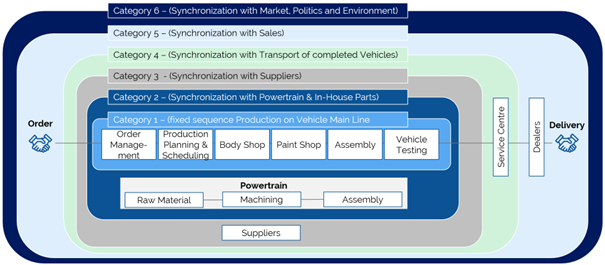
A fundamental change in strategy as a way out of the crisis for the German automotive industry

It's time to open our eyes. While we continue to celebrate “German engineering” and cultivate our premium image, competitors from China and the USA are overtaking us - electrically, digitally and at prices that we can barely compete with. If we don't change our mindset quickly, we will soon only see the tail lights of the competition.
The uncomfortable truth: we slept through the trend
Instead of focusing on torque and premium interiors, newcomers from the USA and China (e.g. BYD, Tesla) have long since taken the lead in electromobility and connectivity on the global market. Today, cars are no longer purely status symbols: price-performance, connectivity and customizable interfaces are the new priorities. This is where the competition scores because it has understood what customers really want.
The way out of the mess - time for radical change!
What does the competition do better?
Customer centricity and technology
Customers are increasingly interested in smart features, autonomous driving and connectivity. Cars are becoming “smartphones on wheels” - the competition not only offers the better interfaces, but also the better price.
Electromobility: a strong 'commitment'
While we stuck to combustion engines and hybrid models for a long time, China has resolutely opted for electric vehicles. Now a wave of e-vehicles is rolling across the market there, which are not only convincing in terms of price, but also in terms of technology.
Fast development, fast implementation
The Chinese and US industries are agile and focus on rapid implementation. Trial-and-error principle instead of endless bureaucracy: anyone who takes three to five years to implement a new model has already lost.
The way out of the mess - time for radical change!
For decades, premium status was a guarantee of stability and success for many companies, but this complacency is becoming a danger in a rapidly changing market. It is no longer just a question of whether we are still in the game, but whether we understand the new rules of the game at all. The answer to the challenge is not “evolution”, but revolution. The radical changes in a multitude of external influencing factors (politics and regulation, demand and market, geopolitical changes, competition and many more) mean that we have to completely rethink our strategy. In order to return to our former strength, the following aspects must therefore be incorporated into future corporate, product and production strategies:
1. Customer-centered innovation:
The customer takes center stage! We develop new business models and technologies that go far beyond traditional products and create a comprehensive mobility experience.
2. Dynamic market adjustments:
With real-time feedback and precise market analyses, we adapt our products at lightning speed - for exactly what the customer needs now.
3. Interdisciplinary cooperation
Away with silo thinking! A dynamic network of internal departments, suppliers and partners promotes innovation and accelerates product development.
4. Proactive risk identification:
Instead of acting reactively, we rely on continuous monitoring and analysis of market and geopolitical trends in order to identify and minimize risks at an early stage.
5. Price offensive and volume strategy:
The mass market demands affordable, well-equipped vehicles. Simply focusing on premium is not enough - the competition is showing how it's done.
6. Focus on sustainability and transparency:
We integrate environmental and social standards into production and the supply chain. This strengthens our brand image and creates trust among consumers.
We see: We don't determine the market - it determines us!
The 6th synchronization circuit
The established “synchronous lean factory” with its five synchronization circuits has ensured stability and efficiency for many companies for a long time. But in today's VUCA world, this is no longer enough. In order to become competitive again in the dynamic automotive industry, a sixth synchronization circle is necessary: close coordination with external conditions such as market requirements, political guidelines and technological changes. Only with this additional flexibility can we react to changing customer needs, geopolitical uncertainties and technological upheavals and remain successful in the long term.

An appeal to us all: we must finally start shaping things again, not just reacting
It's five past twelve. We must not just react, but actively shape change. Chinese and US manufacturers are showing us how it's done - and we should see that as an incentive, not a disgrace. The time for hesitation is now over.
Together: This change is not a task for lone fighters. As a management consultancy, we know that solutions are available. We have the tools, the experience and the know-how to implement the necessary changes - but it takes courage to put all areas to the test: Product strategy, development speed, partnerships and pricing. This will be uncomfortable, but without a radical rethink, the competition and our current customers will soon be waving at us in the rear-view mirror of their electric vehicles.
Horn & Company together with formerly ConMoto, as experts in operational excellence, have proven in many projects that change is possible. Successful change requires the right approach, a strong network, tried and tested tools and, above all, courage. We have the opportunity to put Europe back in the fast lane of the global mobility industry - we have the knowledge and the innovative strength, now we just need the will to put it to use.
Let's tackle the upheaval!


